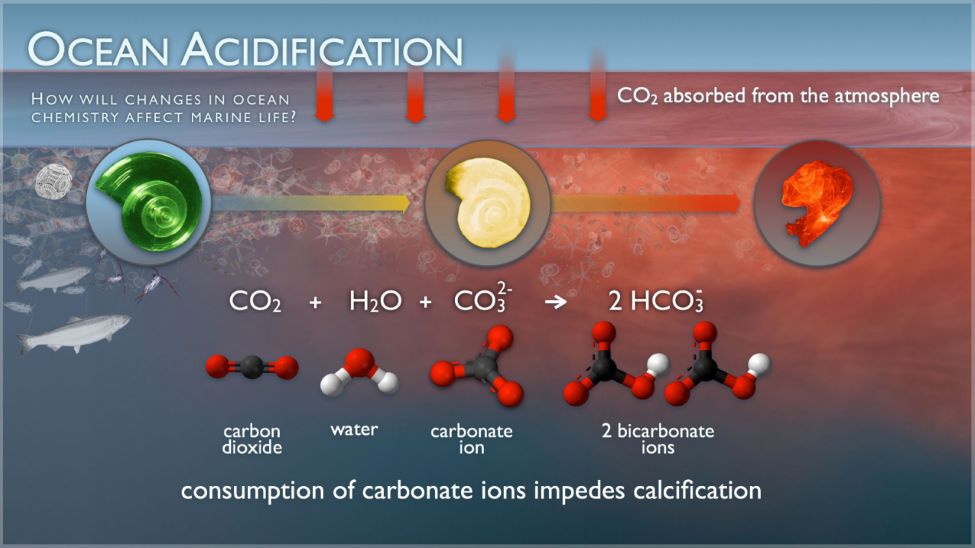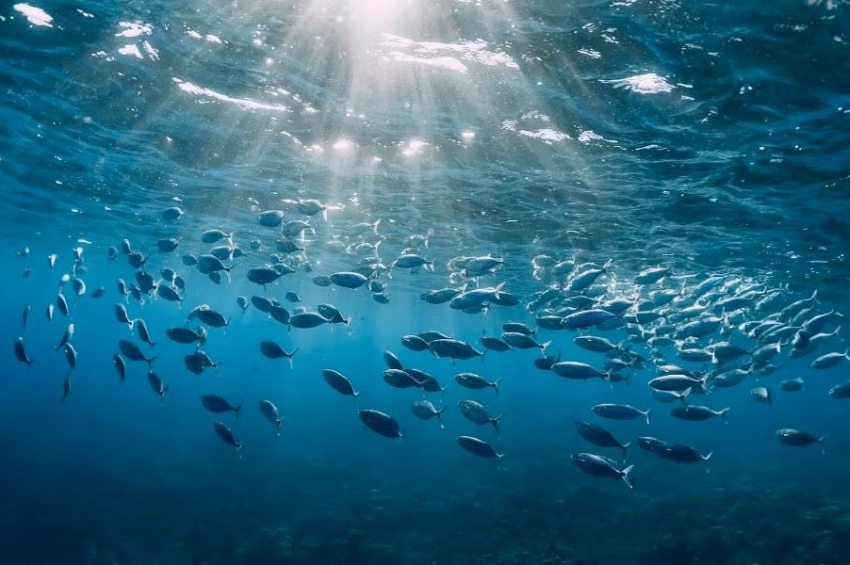Ocean acidification crosses planetary boundary, no return to previous levels is possible now
New research points to “ticking time bomb” that threatens global marine ecosystems.
The world’s oceans have already crossed a critical threshold of acidification, entering what scientists describe as a "danger zone" that threatens marine ecosystems and the economic livelihoods tied to them.
A new study published in the journal Global Change Biology reveals that ocean acidification — a process driven by the absorption of excess atmospheric carbon dioxide — breached its planetary boundary as early as 2020, earlier than previously thought.
“Ocean acidification isn’t just an environmental crisis, it’s a ticking time bomb for marine ecosystems and coastal economies,” Steve Widdicombe, director of science at the U.K.’s Plymouth Marine Laboratory, one of the institutions involved in the research, told InsideClimateNews.
More to read:
Scientists uncover mysterious radioactive concentration beneath Pacific Ocean
“As our seas increase in acidity, we’re witnessing the loss of critical habitats that countless marine species depend on and this, in turn, has major societal and economic implications.”
The research, conducted by scientists from Plymouth Marine Laboratory, Oregon State University, and the U.S.
National Oceanic and Atmospheric Administration (NOAA), shows that average levels of calcium carbonate in the ocean — a substance essential for shell-forming marine organisms — have dropped to 17% of pre-industrial levels in some areas.
Scientists define the acidification “danger zone” as anything below 20%.
The findings push ocean acidification into the alarming category of planetary boundaries already exceeded, joining climate change and five other thresholds that define humanity’s safe operating space.

Source: NOAA
“The previous documentation had suggested we were close to but did not exceed the boundary yet,” said NOAA oceanographer and study co-author Richard Feely.
“What this report says is that when you consider the subsurface waters — and in particular the environments where there is tremendous sensitivity to ocean acidification — the high latitude polar regions and the upwelling regions on the West Coast — those regions have seen tremendous impact.”
Indeed, the study found that at 200 meters below the surface, 60% of ocean waters have already passed the danger threshold, compared to about 40% at the surface. These deeper layers are home to a wide range of marine life, making the impact potentially more severe than previously estimated.
“Most ocean life doesn’t just live at the surface,” explained Helen Findlay, lead author and biological oceanographer at the Plymouth lab. “Since these deeper waters are changing so much, the impacts of ocean acidification could be far worse than we thought.”
The demise of whole marine species is a certainty now, according to the study findings.
Already, the consequences are stark. Tropical and subtropical coral reefs have lost over 40% of their habitat, polar sea butterflies — a key species in marine food chains — have lost more than 60%, and coastal shellfish species have seen a 13% reduction in viable habitat.
More to read:
More than one-fifth of global ocean has darkened in past 20 years – study
“A lot of people think it’s not so bad,” said co-author Nina Bednaršek, a senior researcher at Oregon State University, adding: “We have not changed just one bay, we have changed the whole ocean on a global level.”
The report comes as policymakers and scientists gather at the United Nations Ocean Conference in France to address escalating threats to ocean health, including plastic pollution and deep-sea mining. However, the authors of the study expressed concern that such research is not spurring urgent political action.
“We live in times where studies like this are not making an immediate impact on policy anymore, which is unfortunate,” Bednaršek added.
The crisis will only accelerate and the marine conservation efforts will get weaker over time. The impact will be devastating for all of us, according to the study authors.







